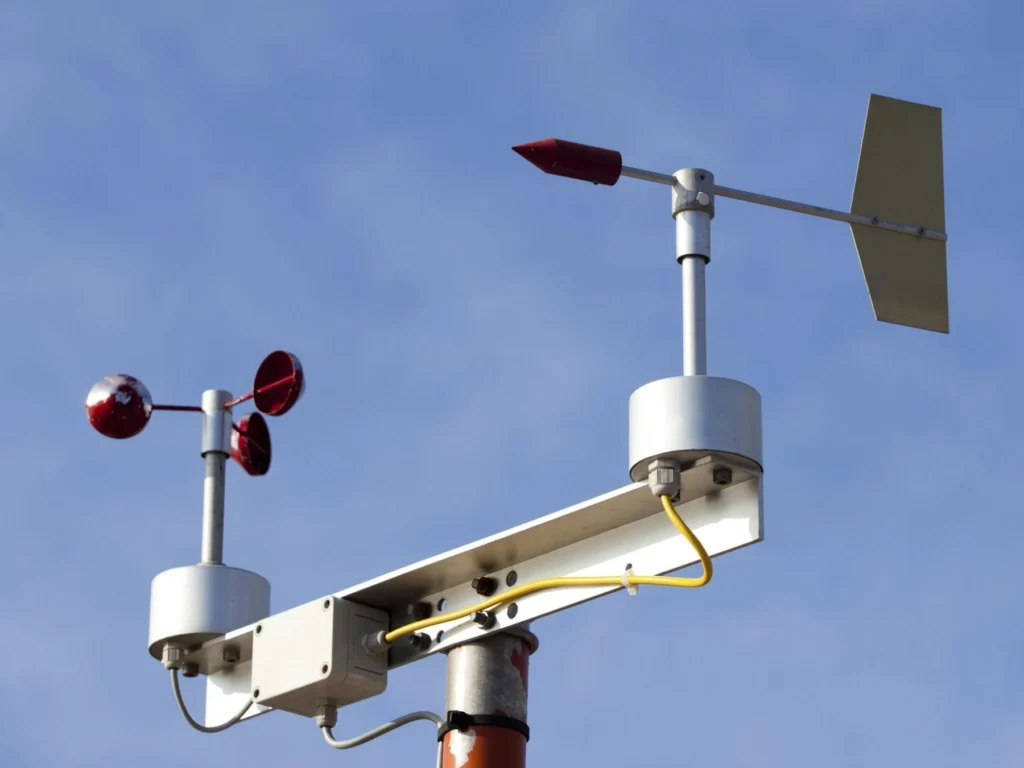
# Anemometer: The Instrument for Measuring Wind Speed
## Introduction to Anemometers
An anemometer is a device used to measure wind speed, a crucial parameter in various fields such as meteorology, aviation, and environmental science. Understanding wind speed helps in predicting weather patterns, ensuring safe air travel, and optimizing renewable energy sources like wind turbines.
## Types of Anemometers
There are several types of anemometers, each with its unique mechanism for measuring wind speed:
– Cup Anemometer: This is the most common type, consisting of three or four cups mounted on horizontal arms. The wind causes the cups to rotate, and the speed of rotation is proportional to the wind speed.
– Vane Anemometer: Also known as a windmill anemometer, it uses a propeller mounted on a wind vane to align with the wind direction. The rotation speed of the propeller indicates the wind speed.
– Hot-Wire Anemometer: This type uses a heated wire that cools down as the wind passes over it. The rate of cooling is used to determine the wind speed.
– Ultrasonic Anemometer: It measures wind speed by sending ultrasonic sound waves between pairs of transducers. The time it takes for the sound to travel is affected by the wind speed, allowing for accurate measurements.
## How Anemometers Work
The basic principle behind most anemometers is the conversion of wind energy into mechanical or electrical signals. For example, in a cup anemometer, the wind causes the cups to rotate, and the number of rotations per unit time is counted and converted into wind speed. In electronic anemometers, sensors detect changes in temperature, pressure, or sound waves to calculate wind speed.
## Applications of Anemometers
Anemometers are used in a wide range of applications:
– Weather Forecasting: Accurate wind speed measurements are essential for predicting weather conditions and issuing warnings for severe weather events.
– Aviation: Pilots rely on wind speed data for safe takeoffs, landings, and in-flight navigation.
– Wind Energy: Wind farms use anemometers to assess wind resources and optimize the placement and operation of wind turbines.
– Environmental Monitoring: Anemometers help in studying air quality, dispersion of pollutants, and microclimate conditions.
## Choosing the Right Anemometer
When selecting an anemometer, consider the following factors:
– Accuracy: Ensure the device provides precise measurements for your specific application.
– Durability: Choose a robust anemometer that can withstand harsh environmental conditions.
– Ease of Use: Look for user-friendly features such as digital displays and easy calibration.
– Portability: If you need to measure wind speed in different locations, opt for a portable and lightweight model.
## Conclusion
Anemometers are indispensable tools for measuring wind speed, providing valuable data for various industries and research fields. By understanding the different types and their applications, you can choose the right anemometer to meet your needs and ensure accurate and reliable wind speed measurements.
Keyword: instrument to measure wind speed

